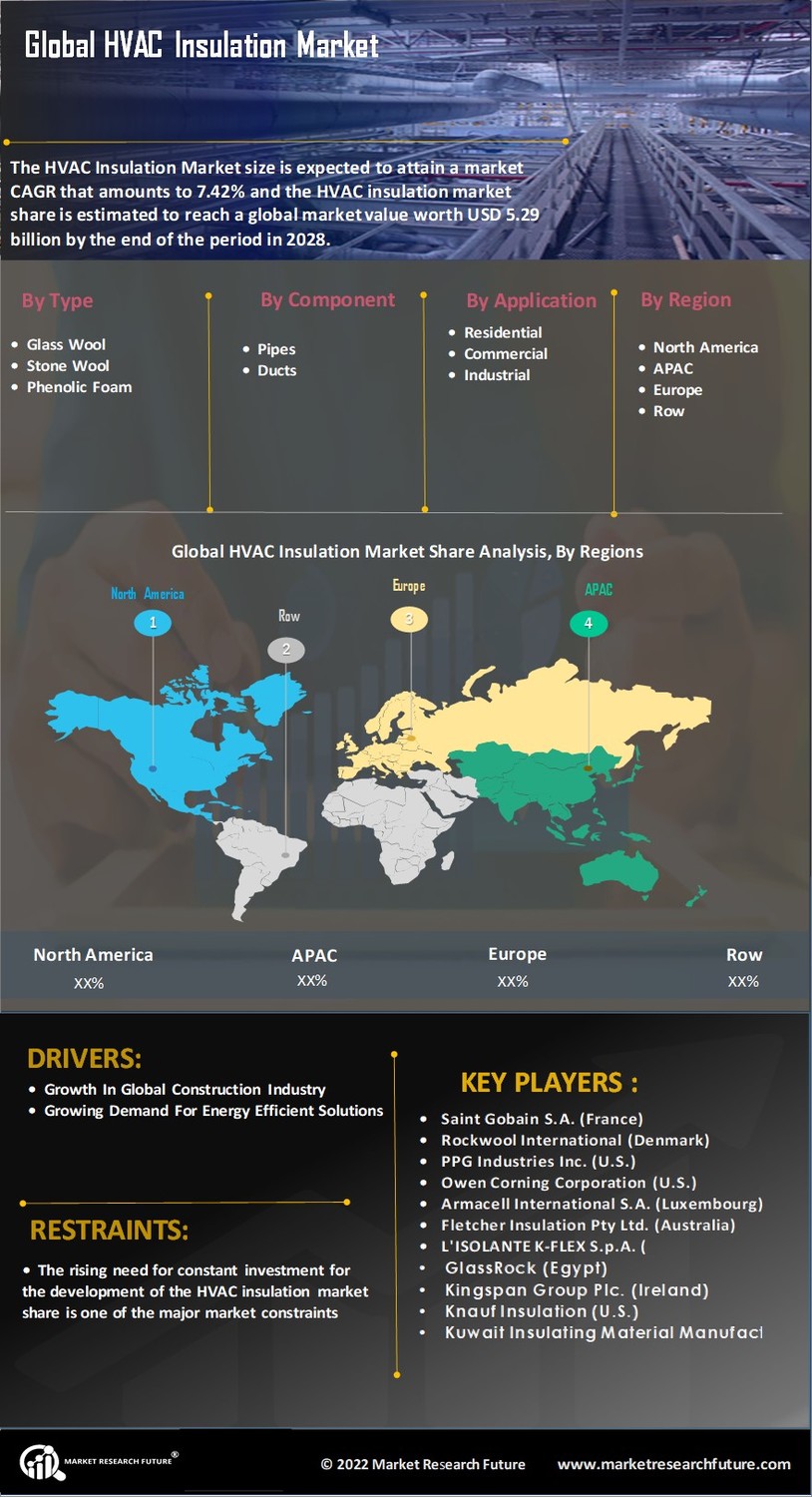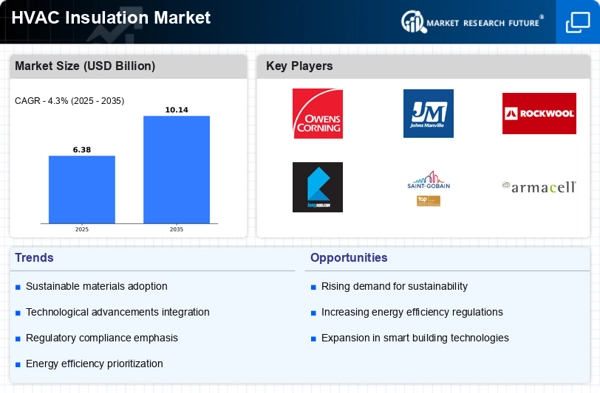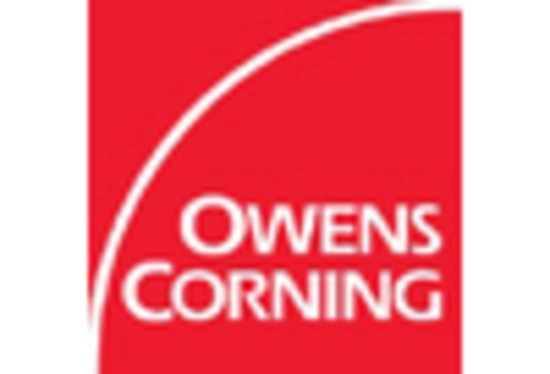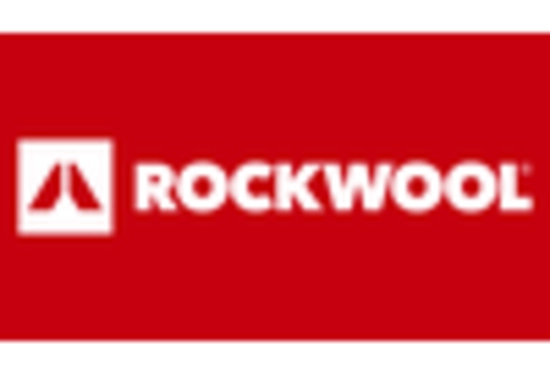Increasing Construction Activities
The ongoing expansion of construction activities across various sectors is a key driver for the HVAC Insulation Market. As urbanization accelerates, there is a heightened demand for residential, commercial, and industrial buildings, all of which require effective insulation solutions. The construction sector is projected to grow at a rate of approximately 4% annually, which directly correlates with the rising need for HVAC systems and, consequently, insulation materials. This trend is particularly evident in emerging markets, where infrastructure development is a priority. As new buildings are constructed, the demand for high-quality insulation products is expected to increase, providing a substantial opportunity for manufacturers within the HVAC Insulation Market.
Rising Energy Efficiency Standards
The HVAC Insulation Market is experiencing a notable shift due to the increasing energy efficiency standards mandated by various regulatory bodies. These standards aim to reduce energy consumption in residential and commercial buildings, thereby driving the demand for high-performance insulation materials. As energy costs continue to rise, consumers and businesses are more inclined to invest in insulation solutions that enhance energy efficiency. Reports indicate that the insulation market is projected to grow at a compound annual growth rate of approximately 5% over the next few years, largely fueled by these stringent regulations. Consequently, manufacturers are innovating to develop insulation products that not only meet but exceed these standards, positioning themselves favorably in the HVAC Insulation Market.
Growing Awareness of Environmental Impact
In recent years, there has been a marked increase in awareness regarding the environmental impact of construction and building operations. The HVAC Insulation Market is significantly influenced by this trend, as consumers and businesses alike seek to minimize their carbon footprints. Insulation plays a crucial role in reducing energy consumption, which in turn lowers greenhouse gas emissions. As a result, there is a growing preference for eco-friendly insulation materials, such as those made from recycled or sustainable resources. Market data suggests that the demand for green insulation products is expected to rise, with a projected increase of 7% annually. This shift towards sustainability is compelling manufacturers to innovate and adapt their offerings, thereby enhancing their competitiveness in the HVAC Insulation Market.
Regulatory Incentives for Energy Efficiency
Governments worldwide are implementing various regulatory incentives to promote energy efficiency in buildings, which is significantly impacting the HVAC Insulation Market. These incentives often take the form of tax credits, rebates, and grants for the installation of energy-efficient insulation systems. Such policies encourage homeowners and businesses to invest in insulation solutions that not only comply with energy standards but also offer long-term cost savings. Market analysis indicates that regions with robust energy efficiency programs are witnessing a faster adoption of advanced insulation materials, with growth rates exceeding 5% in some areas. This regulatory support is likely to continue driving innovation and investment in the HVAC Insulation Market, as stakeholders seek to capitalize on these financial benefits.
Technological Innovations in Insulation Solutions
Technological advancements are reshaping the HVAC Insulation Market, leading to the development of innovative insulation solutions that offer superior performance. New materials, such as aerogels and advanced foam insulations, are being introduced, which provide enhanced thermal resistance and energy efficiency. These innovations not only improve the effectiveness of insulation but also contribute to space-saving designs, making them attractive for modern construction projects. The market for these advanced insulation materials is anticipated to expand, with estimates suggesting a growth rate of around 6% over the next five years. As builders and contractors increasingly recognize the benefits of these technologies, the HVAC Insulation Market is likely to witness a surge in demand for high-tech insulation products.

















Leave a Comment